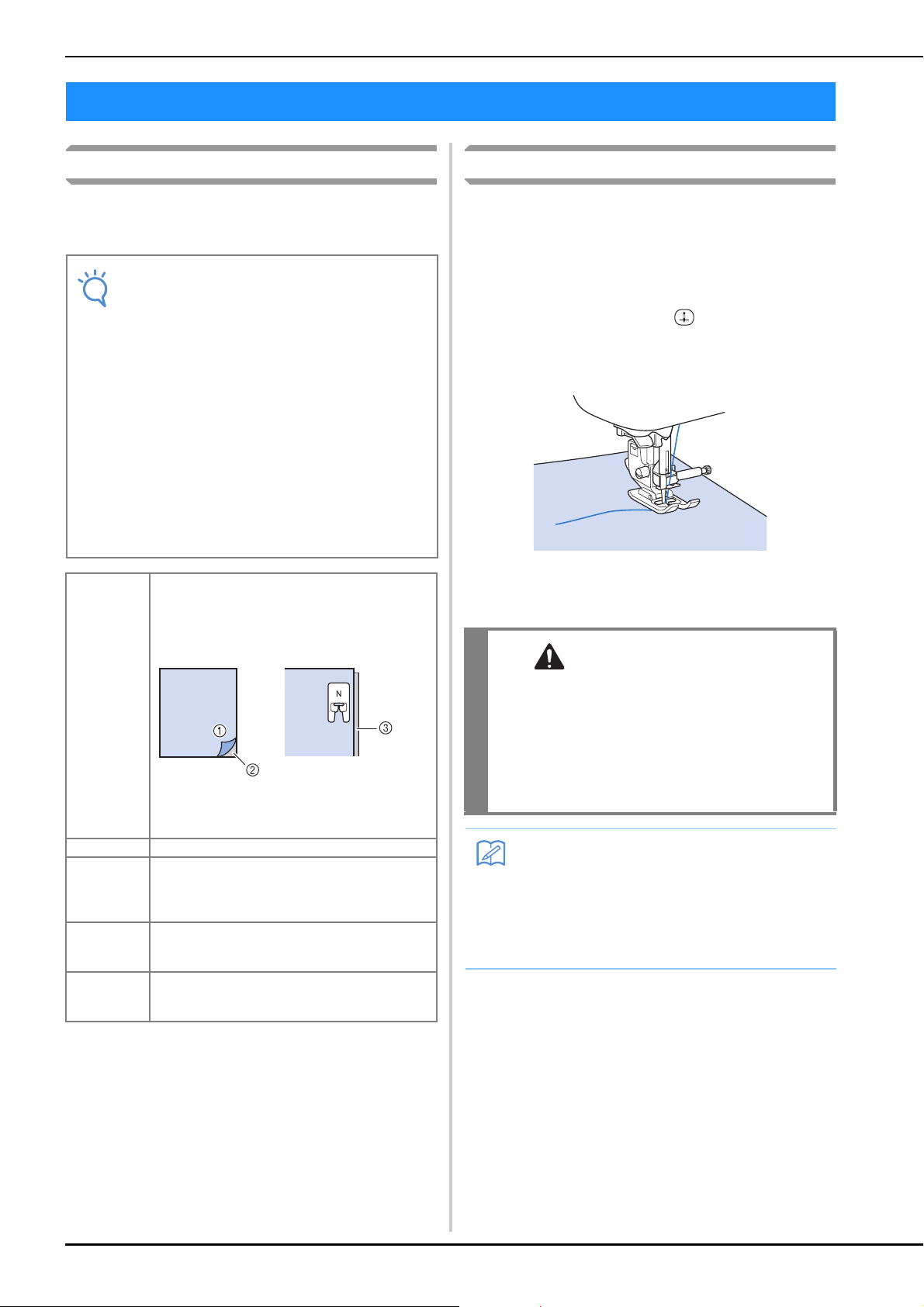Loading ...
Loading ...
Loading ...

Sewing Stitch Patterns
D-4
Sewing attractive finishes
To achieve attractive results when sewing
character/decorative stitches, check the table below for the
proper fabric/thread/needle combinations.
Basic sewing
a
Select a decorative/character stitch pattern.
b
Attach monogramming foot “N”.
c
Place the fabric under the presser foot, pull the upper
thread out to the side, press (Needle position
button) to lower needle into fabric and then lower the
presser foot.
d
Press the “Start/Stop” button to begin sewing.
e
Press the “Start/Stop” button to stop sewing.
Sewing Stitch Patterns
Note
• Other factors, such as fabric thickness, stabilizer
material, etc., also have an effect on the stitch,
so you should always sew a few trial stitches
before beginning your project.
• It may be necessary to adjust the pattern,
depending on the type of fabric being sewn or
the sewing speed. Adjust the pattern while
sewing trial stitches on a scrap piece of fabric
that is the same as what is used in your project.
Refer to “Making adjustments” on page D-5.
• When sewing satin stitch patterns, there may be
shrinking or bunching of stitches, so be sure to
attach a stabilizer material.
• Guide the fabric with your hand to keep the
fabric feeding straight and even during sewing.
Fabric When sewing on stretch fabrics, lightweight
fabrics, or fabrics with coarse weaves, attach
stabilizer on the wrong side of the fabric. An
alternative would be to, place the fabric on thin
paper such as tracing paper.
1 Fabric
2 Stabilizer
3 Thin paper
Thread #50 - #60
Needle With lightweight, regular, or stretch fabrics: the Ball
point needle (golden colored) 90/14
With heavyweight fabrics: home machine needle
90/14
Presser foot Monogramming foot “N”.
Using zigzag foot “J” or other presser feet may
give inferior results.
Twin needle You can sew with twin needle (2.0/11) when you
select a 7 mm satin stitch pattern. In this case, use
zigzag foot “J”.
CAUTION
• When sewing 7 mm satin stitch patterns and
the stitches are bunched, lengthen the stitch
length. If you continue sewing when the
stitches are bunched, the needle may bend or
break. For details on adjusting the stitch
length, refer to “Setting the stitch length” in
the “Basic operations” section.
Memo
• If the fabric is pulled or pushed during sewing, the
pattern may not turn out correctly. Also,
depending on the pattern, there may be
movement to the left and right as well as front and
back. Guide the fabric with your hand to keep the
fabric feeding straight and even during sewing.
Loading ...
Loading ...
Loading ...